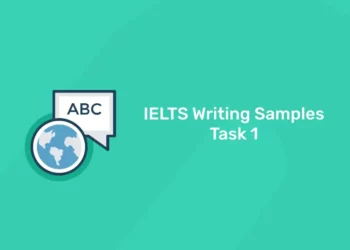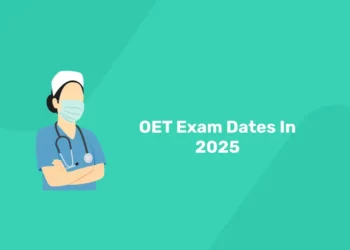Table of Contents
The Indian Rupee, an economic unit of India from the 16th century and the current economic unit of India and Pakistan. The current unit is split into 100 paise in India and Pakistan. The name derives from the Sanskrit rupia (“silver”). The rupee is also the name of the financial unit used in Mauritius, Nepal, and Seychelles. In the late 16th century, the rulers of the Mughal dynasty of central and northern India designated the silver rupee, which was split into 16 annas. In 1671 the British East India Company stamped coins copied from local varieties, using the rupee as the basic unit of account. The worth of the rupee ranged from region to region, however, leaning on the minter, and not until 1835 was the rupee made uniform by law.
After independence in 1947, India maintained the rupee and decimalized it in 1955. Pakistan started making its liberated money in 1948 and accepted the decimal system in 1961. Ceylon (now Sri Lanka) in 1872 embraced a decimal system based on the Indian rupee; it embraced an autonomous monetary system in 1929 and a liberated system in 1949.
The Reserve Bank of India has the exclusive authority to issue banknotes and coins in that country. Banknotes, all of which are illustrated on the front with images of Mohandas Gandhi (1869–1948), the leader of the 20th-century movement against British colonization, are issued in denominations varying from 10 to 1,000 rupees. Coins are issued in denominations of 25 and 50 paise, and there are also 1-, 2-, and 5-rupee coins.
Currency Basics for Bank Exams 2022
Coins in India are directly being issued in denominations of one rupee, two rupees, five rupees, and ten rupees. Coins in the denomination of 1 Paise, 2 Paise, 3 Paise, 5 Paise, 10 Paise, 20 Paise, and 25 Paise have been removed from circulation with effect from June 30, 2011. Paper Currency or Banknotes in India are presently being published in the denomination of Rs 10, Rs 20, Rs 50, Rs 100, Rs 200, Rs 500, and Rs 2000. These notes are named banknotes as they are issued by the Reserve Bank of India.
The printing of notes in the denominations of Rs 2 and Rs 5 has been suspended as these denominations have been coined. The government of India delivers their Notification no. 2652 dated November 8, 2016, have shrunk the Legal Tender status of Rs 500 and Rs 1,000 denominations of banknotes of the Mahatma Gandhi Series printed by the Reserve Bank of India till November 8, 2016. Currency paper is comprised of cotton and cotton rags. The most elevated denomination note ever printed by the Reserve Bank of India was the ₹ 10000 note in 1938 and also in 1954. These notes were demonetized in 1946 and also in 1978.
Get the complete bank notes here
Indian Currency Symbol
The symbol of the Indian Rupee represents India’s international individuality for money transactions and economic strength. The Indian Rupee sign is a parable of Indian ethos. The symbol is a combination of Devanagari “Ra” and the Roman Capital “R” with two parallel horizontal stripes flying at the top depicting the national flag and also the “equal to” sign. The Indian Rupee sign was embraced by the Government of India on 15th July 2010.
The symbol, conceptualized and developed by Udaya Kumar, a postgraduate in Design from the Indian Institute of Technology Bombay, has been selected from thousands of image entries received by the Ministry of Finance via an open contest among resident Indian nationals. The process of selecting and executing this new identity is underway through various digital technology and computer applications.
Who issues the currency notes in India?
1: What does the acronym "ATM" stand for in banking?
The Reserve Bank emanates its role in currency administration from the Reserve Bank of India Act, 1934. The Reserve Bank operates currency in India. The Government, on the guidance of the Reserve Bank, settles on various denominations of banknotes to be issued. The Reserve Bank also conforms with the Government in the designing of banknotes, including the security features.
The Reserve Bank calculates the number of banknotes that are likely to be needed denomination-wise and accordingly, places indent with the different printing presses. The Reserve Bank aims to deliver good-quality notes to members of the public. Towards this aim, the banknotes accepted back from circulation are examined and those fit for circulation are reissued and the others (soiled and mutilated) are eliminated to maintain the quality of banknotes in circulation.
In terms of Section 25 of the RBI Act, 1934 the design of banknotes is needed to be endorsed by the Central Government on the guidance of the Central Board of the Reserve Bank of India. The duty for coinage vests with the Government of India based on the Coinage Act, 2011 as amended from time to time. The Government of India is also answerable for the designing and minting of coins in different denominations.
How the Currency reach the People
The Reserve Bank directly manages the currency processes via its 19 Issue offices located at Ahmedabad, Bangalore, Belapur, Bhopal, Bhubaneswar, Chandigarh, Chennai, Guwahati, Hyderabad, Jaipur, Jammu, Kanpur, Kolkata, Lucknow, Mumbai, Nagpur, New Delhi, Patna, Thiruvananthapuram, a currency chest at Kochi and a vast web of currency chests. These offices accept fresh banknotes from the banknote printing presses. The Issue Offices of RBI send fresh banknote remittances to the specified branches of commercial banks.
The Reserve Bank offices located at Hyderabad, Kolkata, Mumbai, and New Delhi (Mint linked Offices) originally accept the coins from the mints. These offices then send them to the other offices of the Reserve Bank who in turn send the same to currency chests and small coin stations. The banknotes and rupee coins are reserved at the currency chests and small coins at the small coin depots. The bank branches receive the banknotes and coins from the Currency Chests and Small Coin Depots for further allotment among the public.
The rupee which we keep in our pocket has an evasive past. Behind Mahatma Gandhi’s smiling face lies a long history of struggle, exploration, and wealth that can be drafted back to the ancient India of the sixth century BC.
Through these learning notes let’s demystify this history of the Indian rupee, know about how Indian currency has evolved over the ages into the rupee of today, its basics, and details. The Entri learning App will help you to grab more useful information for your studies.












